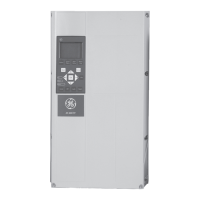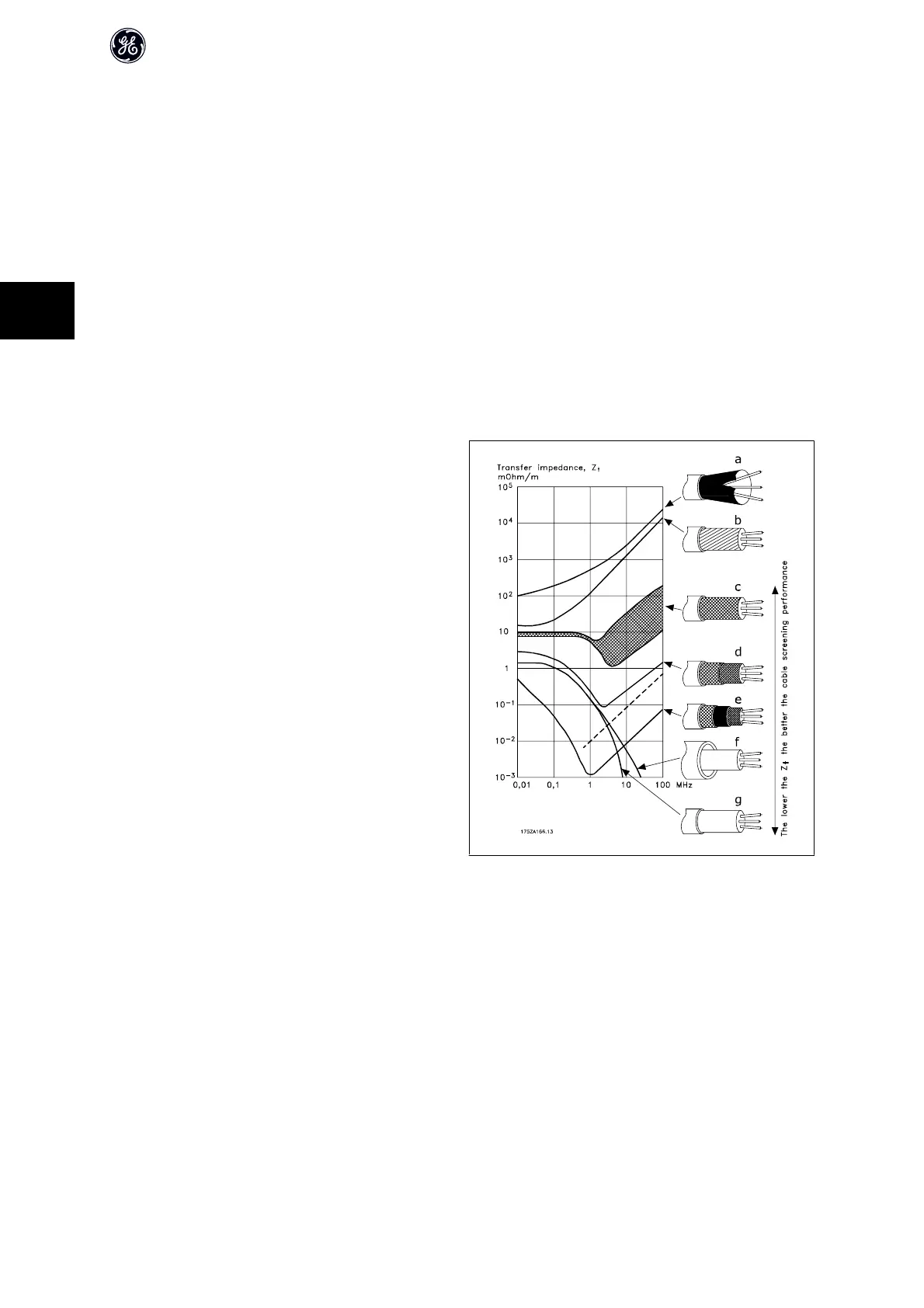4.7.2 Use of EMC-Correct Cables
GE recommends braided screened/armoured cables to optimise EMC immunity of the control cables and the EMC emission from the motor cables.
The ability of a cable to reduce the in- and outgoing radiation of electric noise depends on the transfer impedance (Z
T
). The screen of a cable is normally designed
to reduce the transfer of electric noise; however, a screen with a lower transfer impedance (Z
T
) value is more effective than a screen with a higher transfer
impedance (Z
T
).
Transfer impedance (Z
T
) is rarely stated by cable manufacturers but it is often possible to estimate transfer impedance (Z
T
) by assessing the physical design of the
cable.
Transfer impedance (Z
T
) can be assessed on the basis of the following factors:
- The conductibility of the screen material.
- The contact resistance between the individual screen conductors.
- The screen coverage, i.e. the physical area of the cable covered by the screen - often stated as a percentage value.
- Screen type, i.e. braided or twisted pattern.
a. Aluminium-clad with copper wire.
b. Twisted copper wire or armoured steel wire cable.
c. Single-layer braided copper wire with varying percentage screen
coverage.
This is the typical GE reference cable.
d. Double-layer braided copper wire.
e. Twin layer of braided copper wire with a magnetic, screened/arm-
oured intermediate layer.
f. Cable that runs in copper tube or steel tube.
g. Lead cable with 1.1 mm wall thickness.
AF-600 FP Design Guide
92
4

